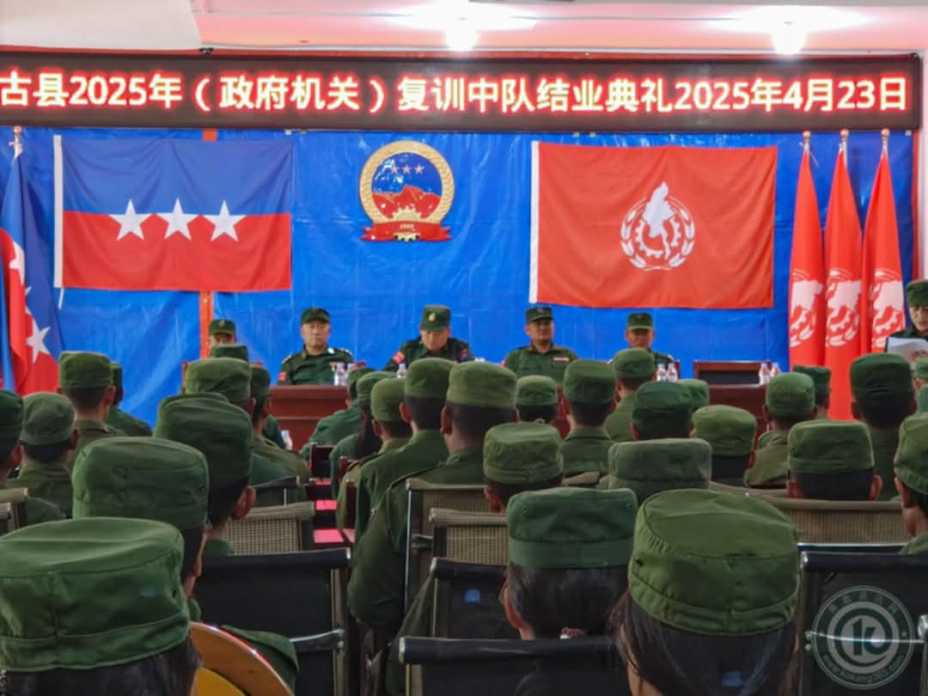“Myanmar Spring Chronicle – April 26 Overview”, published by MoeMaKa on April 27, 2025:
Kokang Forces Speak Out on Lashio Withdrawal for the First Time; Life Among the Earthquake Ruins
The MNDAA (Kokang Army) has publicly commented for the first time on their withdrawal from Lashio, citing political pressure as the reason. This statement was not issued as a formal military or political communiqué but was included in a broader announcement concerning the evacuation of medical personnel and supplies from Lashio General Hospital.
In the statement, the MNDAA explained that due to external political pressure—implicitly referencing China—they were compelled to withdraw from Lashio. The announcement also clarified criticisms from locals about the removal of equipment, stating that only about 20% of necessary medical supplies and machinery were transported out.
Background to the Withdrawal
The MNDAA had captured Lashio, including the Northeastern Regional Military Command headquarters, on August 3, 2024, during the peak of Operation 1027. They controlled Lashio for over eight months, until formally handing it back to the junta on April 22, 2025.
Unlike earlier territorial gains during Operation 1027, which were achieved through combat, Lashio was handed over through negotiation, pressure, and agreement—marking the first time since the coup that a major city and military base were surrendered this way.
Although there are no verified figures on combatant casualties, it is known that over 100 civilians died during the fighting in Lashio, with many more injured.
Lashio held strategic and symbolic importance—both commercially and militarily—making the withdrawal a significant moment that raises questions about the political and military goals of Operation 1027.
Implications for the Resistance Alliance
The withdrawal has also triggered reflection among allied forces, including PDF units and other ethnic armed groups that had assisted in the capture of Lashio. Future collaborations between the MNDAA, other EAOs, and PDF forces may require clearer negotiation and agreement on objectives and outcomes.
Some participating forces may have joined primarily for military gain, while others acted with the broader Spring Revolution in mind. The differing motivations could impact future military alliances.
The Lashio withdrawal thus serves as a serious lesson: when coordinating joint operations, all sides must align on political as well as military goals.
The Broader Earthquake Aftermath
Another key story of the day:
More data has emerged regarding the March 28 earthquake centered in Sagaing.
According to the Disaster Management Center (DMC):
-
Over 600,000 people were affected
-
400,000 have returned to their own homes
-
Approximately 50,000 are staying in official shelters
-
About 150,000 are self-settled in temporary shelters
This data shows the scale of the reconstruction challenge: clearing debris, assessing unsafe structures, and building safe, permanent housing are enormous tasks.
Economic Hardship Across Cities
While Mandalay, with its stronger economy, may recover more quickly, other towns like Sagaing, Kyaukse, Pyinmana, Yamethin, Inle, Pyawbwe, and Wundwin face serious difficulties.
Even in Mandalay, many are surviving by spending their savings with few job opportunities available.
In Sagaing and Mandalay, many buildings remain damaged and unsafe, with temporary shelters set up along roadsides. According to UN reports, over 40,000 people still live in tents—just as the hot season peaks and the monsoon rains are approaching.
The risk of flooding in makeshift camps is a looming danger.
Long-Term Impact on Communities
In severely damaged cities, small business owners, hotel operators, and service industry workers have lost their livelihoods.
Even in Naypyitaw and other junta-held cities, the regime has been unable to rebuild staff housing or provide meaningful recovery support—exposing the junta’s administrative weaknesses.
In lower-income towns like Sagaing, Kyaukse, Yamethin, Inle, and Pyawbwe, rebuilding will be especially slow and difficult.
Some observers have drawn historical parallels to Mandalay’s 1984 fire disaster, when original residents sold properties and outsiders moved in, changing the social fabric of the city—a risk that may arise again if recovery is slow and uneven.

